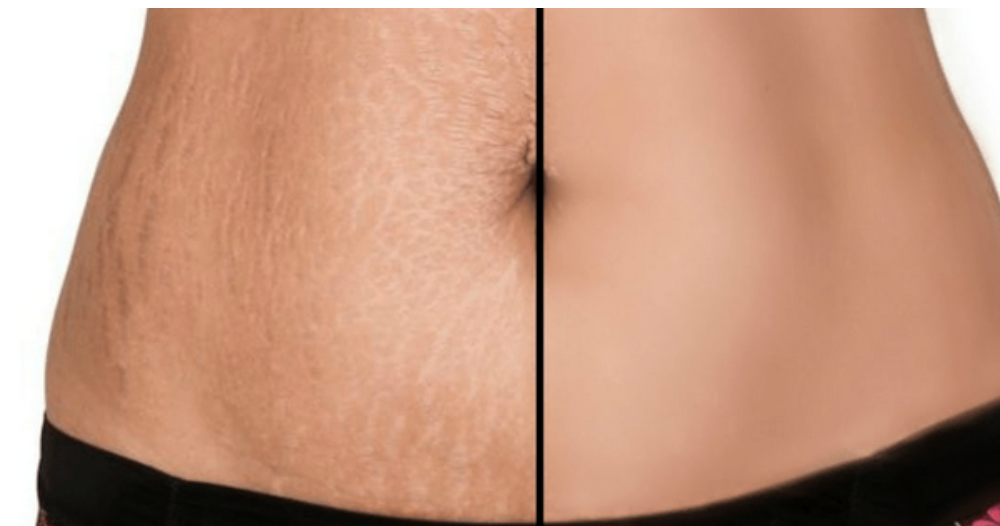If you’ve been menstruating for the past, say, 15 years, and will continue to do so 12 times a year for an average of 38 years of your life, that’s 456 periods in a lifetime. Theoretically, that should make you a full-blown expert on your period by now. Maybe you’ve mastered the art of not leaking through your clothes since your tween years, thanks to the ability to correctly insert a tampon, position a pad or menstrual cup just right, or just throw on some period underwear. Ultimately, we know that getting a monthly period is an important part of reproductive and full-body health, but many of us are just starting to explore the day-to-day ins and outs of our menstrual cycles….Click Here To Continue Reading>>

Related story Jessica Biel Is Writing a Kids Book About Periods to ‘Normalize’ Those Awkward Puberty Conversations
Have you ever wondered why your boobs hurt at certain times of the month, or why you’re more tired? Do you know the exact right time to take a pregnancy test? Or maybe you’re considering cycle syncing your workout routine to match the best exercises to the right time in your cycle. It’s time to take a step back and look at the big picture — the whole cycle.
Menstrual cycles usually last anywhere from 24 to 35 days, says board-certified OB-GYN Dr. Kelly Culwell, with periods lasting about five days — but again, that varies between menstruators. Your own cycle might even fluctuate in length, especially if you’re taking hormones such as hormonal birth control. (PS: It’s a good idea to track your period with a old-fashioned calendar so you know what to expect every month and can pick up on any changes. You can also try a tracking app, but make sure to check if the app shares users’ data with third parties.) But to gain more insight into what’s going on during each day of your cycle, here’s what you should know about what’s going on during your cycle.
Note that the following 28-day cycle is just an example. Your own might look a little (or a lot) different, and that’s OK! If you’re consistently experiencing intense pain or heavier-than-normal bleeding during your cycle, make sure to talk to your doctor.
Phase 1: Follicular
Your follicular phase involves your menstrual cycle and, afterwards, the preparation for your body to release an egg (aka ovulation, which occurs in the luteal phase). “In the follicular phase, the ovaries are stimulated by a hormone from the brain called FSH which causes a group of immature eggs to grow into follicles,” Culwell explains. “The one that grows the largest will be stimulated by a large surge of the hormone LH (also from the brain), which causes release of the egg from the follicle.” That triggers the luteal cycle, (which we’ll get to in a second!).
Culwell says the follicular phase can last between 14 and 22 days, so here’s what you can generally expect from each day.
Day 1: Ready, set, go! This is the first day of your period, and it kicks off your cycle and your follicular phase The hormone estrogen is at its lowest, and since research shows that estrogen is responsible for increasing serotonin (the “feel-good” chemical), you may be feeling pretty lousy today.
Day 2: Gettin’ heavy with it. The first and second days of your period are typically the heaviest flows, per the UK’s National Health Service. But even though you may be at high tide, you may be feeling a bit more relaxed as estrogen levels start climbing again.
Day 3: pH roller coaster. With all those tampons and extra blood flow, your vaginal pH has increased, which can lead to increased susceptibility to yeast infections.
Day 4: Light at the end of the tunnel. Today your period is hopefully getting a bit lighter — the end is near! The number of your scowled looks continues to decrease too as estrogen climbs higher, and we are nice to our partners again.
Day 5: Crossing the finish line. You’re just about done with your period (or getting close!). Switch to your lighter pads and tampons and start saying goodbye to your cramps and mood swings.
Day 6: One in 100,000. After your period ends, the most dominant follicle in your ovaries continues to grow in preparation to eventually release an egg.
Day 7: Carpe diem. You should be your normal self now, but possibly a bit more optimistic than usual. You can thank the increasing levels of estrogen for your newly-found motivation to ask for a raise, since studies show that the follicular phase of the menstrual cycle is associated with positive, cheerful emotions with the lift in hormones.
Day 8: Mirror, mirror on the wall. You’re the fairest of them all. Your skin is glowy and bright, you feel good, and you have the confidence to strike up a conversation with that male model at the bar (once again, thanks to that estrogen lift).
Day 9: Making space for a possible baby. The reason you’re getting this infusion of estrogen (and other hormones, like progesterone) is to help build up your uterine lining, Culwell explains. This is how your body prepares for the implantation of a fertilized egg (if that happens this cycle).
Day 10: Oh, happy day! “People typically feel best after menstruation in the late follicular phase,” Culwell says, so enjoy these next few days! Every cup is half full, and everything is coming up in roses. Your levels of optimism are through the roof.
Day 11: Let the ovulating begin. Okay, ovulation is just around the corner, and since your ovulation day can change from cycle to cycle, studies say, it wouldn’t hurt to start the baby-making process now. (That is, if you want a baby — otherwise, it’s a good idea to use birth control or another form of protection.) Ovulation kits can also help you determine when your fertile window starts and ends each cycle.
Day 12: Got that lovin’ feeling. Per Johns Hopkins Medicine, most people’s fertile window starts about five days before ovulation, so your libido has probably started picking up by now. You might also have noticed a difference in your cervical mucus, which becomes “thinner and more slippery” just before ovulation, says Culwell. This helps sperm slip through the cervix and into the uterus to fertilize the egg more easily.
Day 13: Estrogen reaches Mount Everest. Your estrogen levels peak right before ovulation and then drop suddenly right after. So take this as your last day to make lemonade from life’s lemons….Click Here To Continue Reading>>
Phase 3: Luteal
Welcome to the luteal phase, which is all about ovulation. This phase “tends to be the same length for all people,” Culwell says — usually around 14 days.
Day 14: Ovulation! The dominant follicle releases the egg for its journey down the fallopian tube. The egg will live for 12 to 24 hours, while sperm can survive three to five days — so you can get pregnant if you have sex up to five days before ovulation or one day after it. If you’re trying to get pregnant, per Cleveland Clinic, it’s a good idea to have sperm in your body already when you ovulate. You might also experience cramping or other symptoms of ovulation during this busy day for your body.
Day 15: Hello, progesterone. Goodbye, estrogen. As ovulation ends, estrogen levels plummet as progesterone levels begin to take its place. You may be a bit irritable, but don’t worry — estrogen will be back soon.
Day 16: It’s getting hot in here. With increased amounts of progesterone, studies say you may notice your body temperature sits a little higher than usual.
Day 17: Don’t take that test quite yet. Anxious to see if you’re pregnant? It might be too early to tell. Hang in there, and check back in next week.
Day 18: Back for round two. Estrogen levels begin to rise again, along with the increasing amounts of progesterone.
Day 19. Easy with the girls. The hormones in your system increase blood flow to your breasts and may cause them to be fuller but extra sensitive.
Day 20: You’re cut off. If your egg hasn’t been fertilized, then your body will call it quits on producing estrogen. Enter: PMS, which can start right around now. “Some people experience mood changes, headaches and fatigue with bloating and cramping starting 7-10 days before menstruation starts,” Culwell says.
Day 21: Baby on board? About ten days after ovulation is when some pregnancy tests may be able to detect faint levels of the pregnancy hormone HCG. If the egg has been fertilized, your hormone levels may be able to accurately answer your pressing “am I pregnant?” question. However, you might be better off to wait until your missed period, which may give you a more accurate test result, according to the Cleveland Clinic.
Day 22: You’re getting sleepy. Today your progesterone levels are at their max. Progesterone is known for causing sleepiness, studies say, which may equate to an increased tendency to doze off in the middle of that super-exciting board meeting.
Day 23: Cool! Small pores. Research has found that progesterone activates the production of sebum and swells the skin, which might cause your pores to appear smaller in size. But the swelling is actually compressing your pores, and the sebum is building up underneath — a situation that may rear its ugly head in the form of acne in a few days’ time.
Day 24: Reschedule your waxing appointment. At this sensitive time of PMS, your body is more susceptible to pain than during other times of the month. Avoid tweezing, waxing or laser hair removal.
Day 25: Let the bloating sink in. You may begin to feel more bloated, no batter what you eat. With all the hormone changes, our bodies tend to hang on to extra water in our system. One of the most ironic cures? Drink more water to flush out your system.
Day 26: Mood swings will happen. You may find that it’s hard to stabilize your mood or that you’re tearing up over puppy videos. This is okay. Feel your feelings. If you find it hard to function in your daily activities or experience debilitating mental stress, speak to your doctor about an evaluation for PMDD, a more severe form of PMS.
Day 27: All the food cravings. As PMS settles in, you will want to eat the craziest combinations of peanut butter and potato chips and chocolate. Give into your cravings, but be mindful to drink plenty of water and not to overdo it with sugar and salt, which can contribute to more bloating.
Day 28: And the cycle begins again. If a fertilized egg hasn’t implanted in your uterus (aka, if you haven’t gotten pregnant this cycle), it’s about time for your period to start up again. Around this time, your levels of progesterone and estrogen drop, “which reduces blood flow to the built up uterine lining,” Culwell says. “The lining then breaks down and sloughs off,” starting your period all over again.
…Click Here To Continue Reading>>







